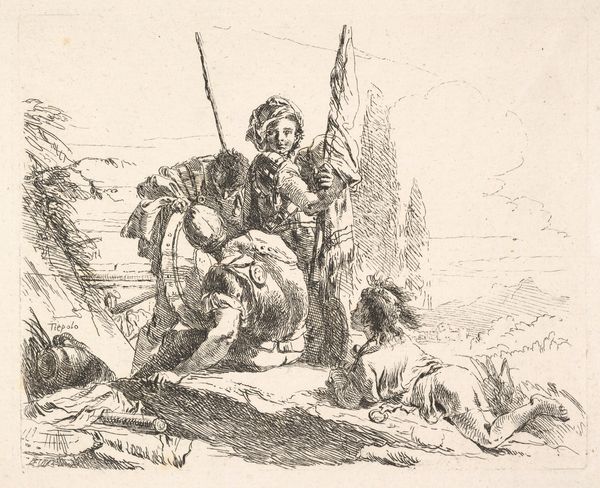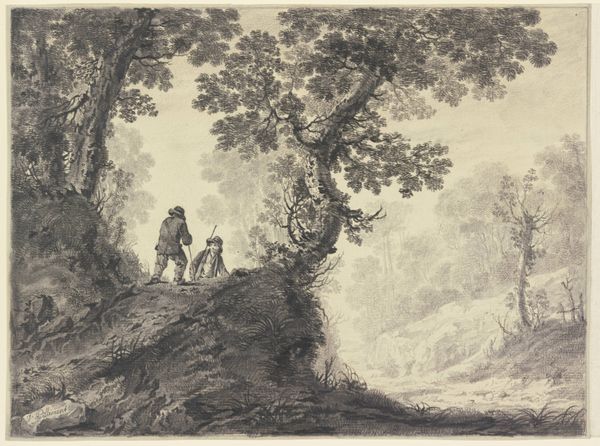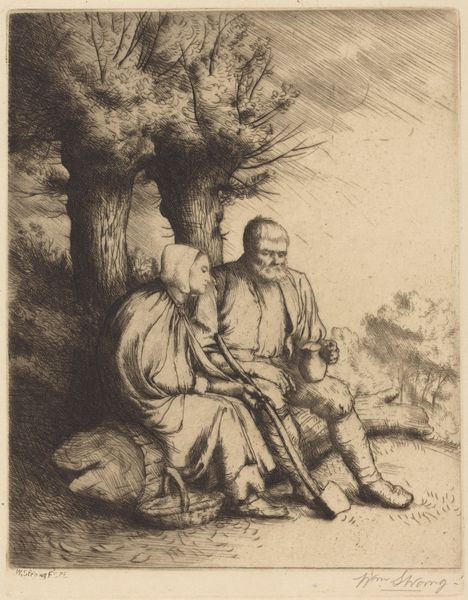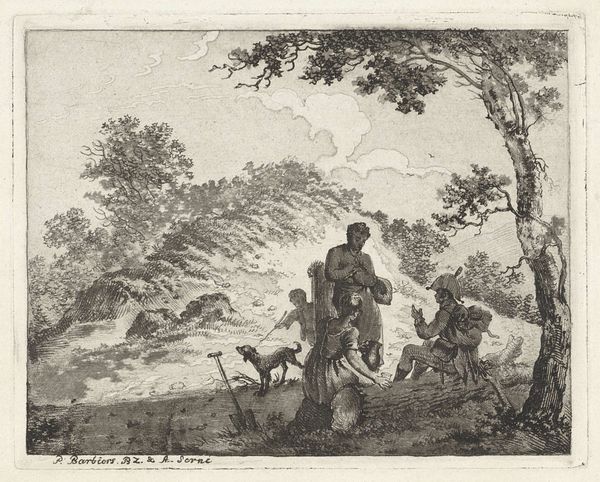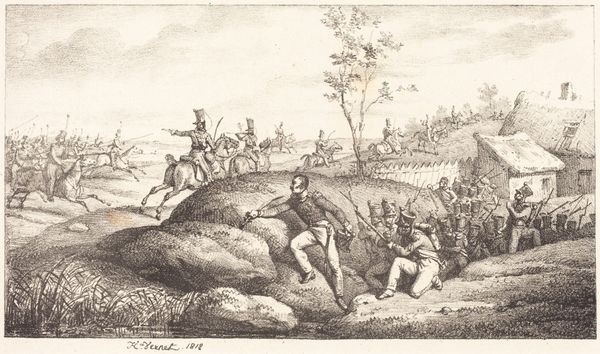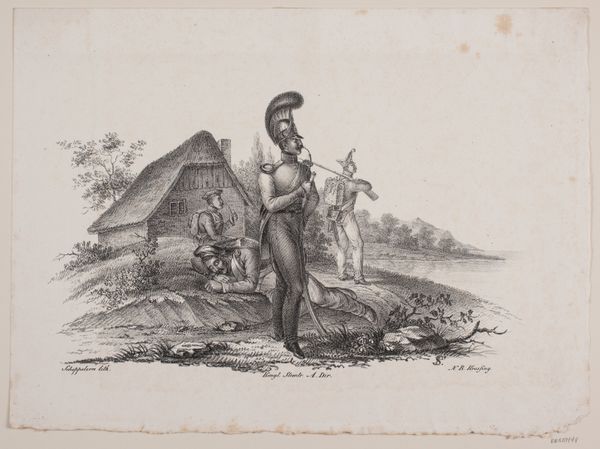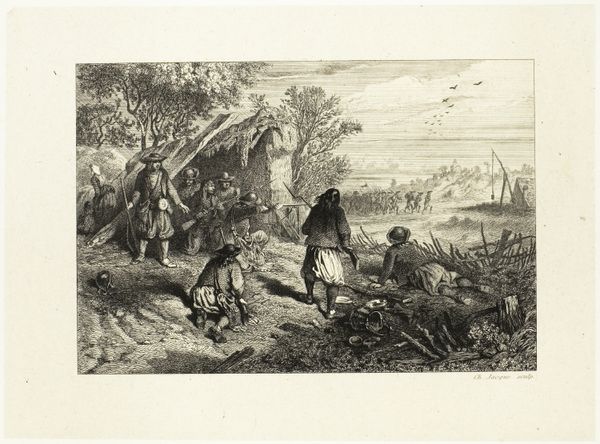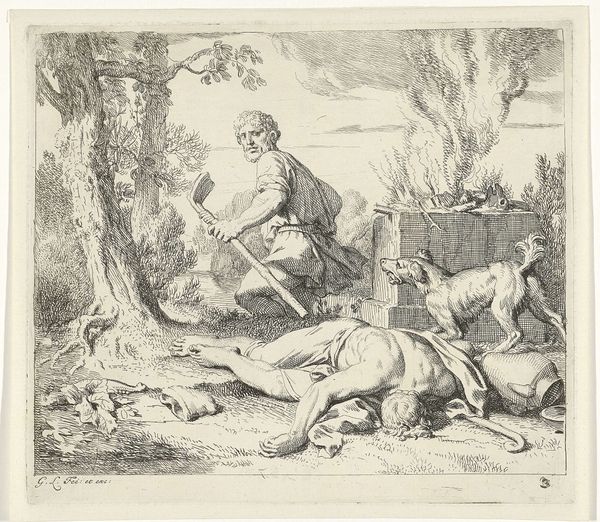
drawing, print, ink, pencil
#
drawing
#
narrative-art
# print
#
pencil sketch
#
landscape
#
figuration
#
ink
#
pencil drawing
#
romanticism
#
pencil
#
history-painting
Dimensions: sheet: 14.5 x 20.8 cm (5 11/16 x 8 3/16 in.)
Copyright: National Gallery of Art: CC0 1.0
Curator: Looking at this image, I feel an immediate sense of fatigue and defeat. There’s a stillness amid chaos that’s profoundly unsettling. Editor: This is Horace Vernet’s "Gredin de Sort!...", created in 1823. It's a print made with ink and pencil. Vernet, working within the Romantic style, frequently engaged with themes of military life and history. Curator: Right. This image speaks volumes about the glorification and romanticization of war. The central figure, slumped against the tree, seemingly abandoned by his comrades, subverts that heroic narrative. How do the social and political upheavals of the post-Napoleonic era manifest in an artwork such as this? Editor: The roughness of the medium aligns perfectly with the image's emotional impact. Vernet’s quick pencil strokes emphasize the soldier’s vulnerability and, furthermore, they reveal the material conditions and effects of warfare during that era. Notice his tattered uniform, the discarded musket... objects that become symbols of material sacrifice. Curator: Yes, but let’s delve into how it challenges conventional masculinity. Here we see a soldier stripped of agency, almost feminized in his posture. It provokes crucial questions about the gendered expectations projected onto soldiers and how the reality of combat shatters those ideals. How are narratives of trauma and disillusionment depicted and experienced differently by soldiers across different conflicts? Editor: What's really captivating is the use of mass production—creating a print, not a painting—allowing wider accessibility to this critique. I want to explore how printmaking made images like this more consumable for, arguably, all classes during and after wartime. Curator: Certainly. And by extension, it facilitates a broader public conversation around militarism and its human toll. The very act of dissemination becomes a subversive gesture, questioning the established power structures. Editor: Exactly. By exploring the production methods of this piece we recognize how its materials informed and enabled social commentary on war during the 1820s. Curator: This drawing compels us to look beyond heroic depictions and face the unsettling realities of war, and that has resonated through to current visual discourses. Editor: Absolutely. Seeing art through this lens challenges us to ask vital questions about material culture. We see, feel, and interpret objects on a more critical, relevant level.
Comments
No comments
Be the first to comment and join the conversation on the ultimate creative platform.
